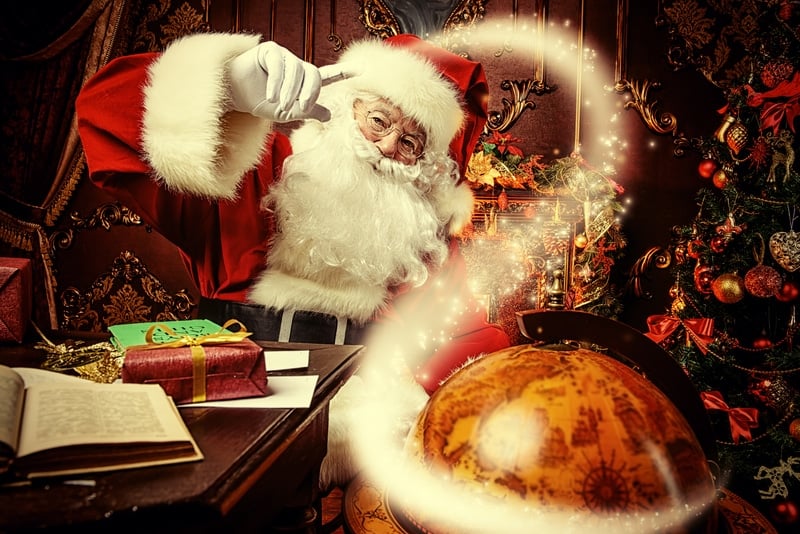Santa Claus, the jolly, rotund figure with a snow-white beard and a sack full of gifts, has been a pivotal part of our festive traditions for centuries. But how did Santa Claus die? To answer this query, we need to dig deeper into the historical roots of the figure we lovingly associate with Christmas.
The Real Santa Claus: St. Nicholas of Myra
The figure we know as Santa Claus has his roots in a historical figure – St Nicholas. Born in the region now known as Turkey, Saint Nicholas was a bishop in the small town of Myra, now called Demre. His acts of kindness and generosity became legendary, leading to him becoming the inspiration for the modern Santa Claus.
The Life and Times of St. Nicholas
While the real St Nicholas lived during the decline of the Roman Empire, not much is known about his life. However, he became a figure of legend, with stories of him chopping down a demon-possessed tree, calming storms, saving girls from destitution, resurrecting the dead, and even participating in brawls at religious councils.
Saint Nicholas became the patron saint for various groups, including sailors, children, brewers, merchants, and more. His generosity became his defining trait, with his acts of wealth distribution forming the foundation for the gift-giving figure of Santa Claus.
The Death and Afterlife of St. Nicholas
St. Nicholas died and was buried at his church, with a new church being built over his original one by order of Roman Emperor Theodosis II. However, his burial place has been a source of debate and intrigue for centuries.
The Controversy: Where is St. Nicholas Buried?
The location of the remains of saints is a subject of scientific, religious, and academic interest. While the remains of many saints are distributed across several countries, St. Nicholas is a unique case. His remains have been kept primarily in one location: Bari, Italy.
The Journey to Bari, Italy
The remains of St. Nicholas were moved to Bari, Italy, as a result of geopolitical changes, Islamic invasions, and religious tensions. In 1087, Italian sailors from Bari stole the remains and brought them back to their city. This event was recorded in historical texts, solidifying its reliability.
The remains were interred in a new church, the Basilica di San Nicola, where they remain to this day. They were moved a few times, including in 2017 when some parts were loaned to Moscow.
The Discrepancy: Are the Remains in Bari those of St. Nicholas?
The matter of whether the remains in Bari are indeed those of St. Nicholas has been a topic of debate. Some believe that the remains belong to another local priest, not the legendary saint.
The Discovery in Demre, Turkey
Excavations in Demre, Turkey, at the church where St. Nicholas served as a bishop, have provided new insights into the controversy. The floor of the original church was discovered, hinting at the exact location of St. Nicholas’s burial spot before his bones were moved.
The Hurdles of the Discovery
The discovery in Demre is not without its challenges. Rising sea levels have flooded parts of the original church, making it difficult to explore further. The hope, however, is to unearth additional remains or relics that can provide more evidence of St. Nicholas’s original burial place.
Santa Claus: An Evolution of St. Nicholas
While the controversy of his burial continues, the figure of Santa Clause has evolved from the historical and religious figure of St. Nicholas. This evolution began as far back as the 16th century when St. Nicholas started to gain his modern image.
The American Image of Santa Claus
The Dutch brought the legend of St. Nicholas, or “Sinterklaas,” to the Americas, where they celebrated his life annually. The image of Mr Claus and Mrs Claus as we know it today was solidified by the poem “A Visit from St. Nicholas,” also known as “Twas the Night Before Christmas,” by Clement Clarke Moore.
Santa Claus Today
Today, Santa Claus is an integral part of Christmas eve celebrations worldwide. Despite the debates and controversies surrounding the historical figure he is based on, the spirit of kindness, generosity, and gift-giving that Santa Claus represents continues to live on.
Some old Christmas eve celebrations continue in Western Christian countries. There, they celebrate the St Nicholas Day, or otherwise known as the Feast of Saint Nicholas. It happens on December 5th or December 6th in Western Christian Countries, and on December 19th in Eastern Christian Countries.
The reality is that there are many different christmas tradition celebrations around the world. Among them, even the tradition of giving presents is a new one.
In Conclusion
So, how did Santa Claus die? The answer lies in the life and death of St Nicholas, the historical figure behind the beloved character. While there are ongoing debates about the location of his remains, the legacy of St. Nicholas and the spirit of Santa Claus continue to thrive, bringing joy and merriment to the festive season.
Whether the original resting place of St. Nicholas is in Bari, Italy, or Demre, Turkey, the spirit of kindness, generosity, and the joy of giving that he embodied continues to live on in the figure of Santa Claus. And in that sense, Santa Claus is far from dead – he lives on in the hearts of those who keep the magic of Christmas alive.






